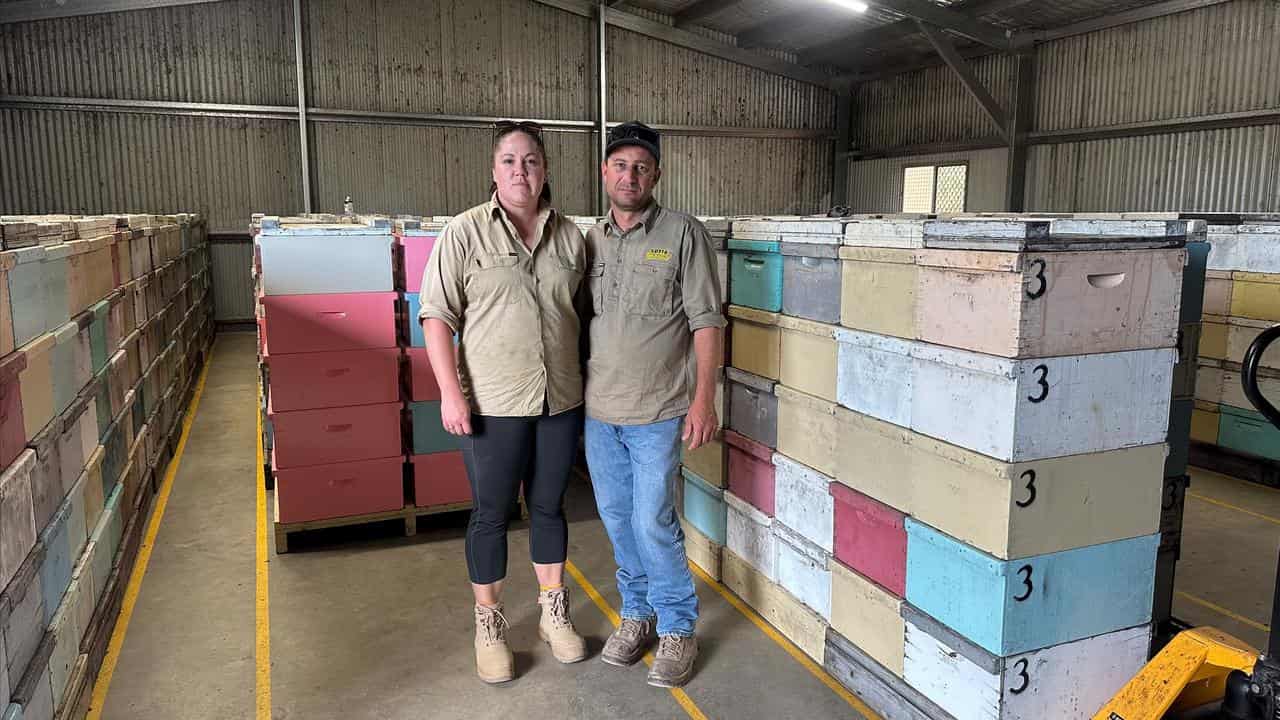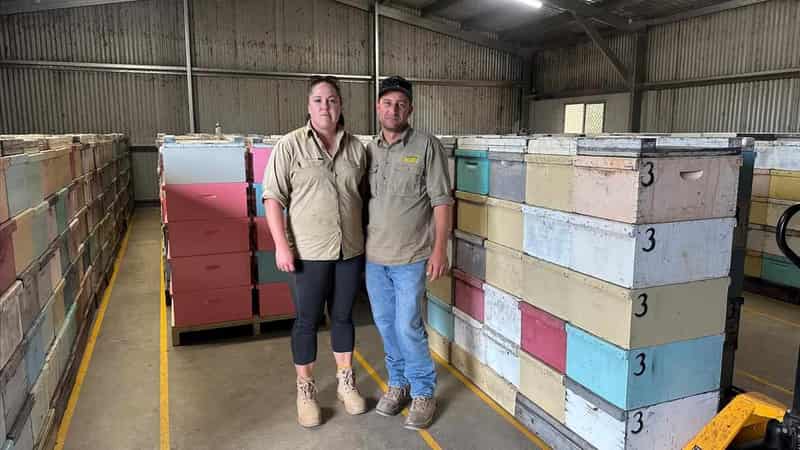
NSW beekeeper Chris Cooper spent Wednesday walking in circles thinking about the bees he'd spent 18 years breeding.
On Tuesday night, authorities euthanised his hives at Kempsey as part of a $100 million attempt by government and industry to eradicate the deadly varroa mite.
Less than 24 hours later the white flag was raised in the eradication war, and so ended the 15-month program which saw 30,000 hives destroyed since the mite was found in Newcastle in June 2022.
The mite is beyond their control, and euthanasia is now optional.
"It's horrifying," the third-generation amateur beekeeper told AAP.
"The one hand didn't know what the other hand was doing, somebody should have known and said 'hang on a minute, we won't do this (euthanise) at the moment'.
"At least we've gone to management now. We can try and manage it, the rest of the world has."
Some beekeepers had been telling authorities for months that trying to eradicate the parasite was pointless, given no country had been successful in destroying the mite once it had taken hold.
By August, when the mite was found in almond populations in southern NSW, some apiarists declared the war on the pest had been lost.
In mid-September AAP reported stakeholders who originally supported the eradication plan had shifted their position, with the Australian Honey Bee Industry Council telling authorities beekeepers must learn to live with the mite as the rest of the world had done.
The decision to abandon eradication and move to managing the pest came too late for North Coast beekeeper Daniel Costa.
Five hundred of his 750 bee hives were euthanised in early-September after the mite was detected.
After 23 years in the honey game, he's now contemplating his future.
"If you're going to get out, now is the time to do it," he said.
"The eradications basically left a lot of businesses here crippled.
"There were a lot of hives that were destroyed in the last month and I believe that was all in vain, and cost the Australian taxpayer millions."
Varroa took hold on the north coast of NSW in March, and failure to detect it was the tipping point for authorities in abandoning eradication attempts.
The illegal movement of bees and a recent spike in new detections also influenced the unanimous decision by the group of 16 industry and nine government parties to transition to management.
So what's next for Australia's beekeepers?
For starters, they will need to learn how to treat their hives for varroa.
"We don't have to rush to treatments, we don't have to rush to education," Danny Le Feuvre from the Australian Honey Bee Industry Council said.
"We are expecting to see it spread quite widely and quickly across NSW but at low levels ... we're not expecting to see a huge impact from the mite immediately."
Stakeholders will discuss next steps including when NSW hives can be moved out of the state again.
"We know from our experience with COVID that the jurisdictions may or may not take matters into their own hands," Mr Le Feuvre said.
"The plan next week is really to negotiate, what does training and education look like?"
"It's definitely going to cost the industry a lot of money."
They need only look to New Zealand to see how much that cost might be.
The mite arrived in NZ in 2000 and apiarist Murray Elwood estimates it costs him around $40 a hive, or an extra $NZ100,000 a year, to control.
"The extra cost comes from the varroa treatments that you have to do and the extra time involved putting the treatment into the hives, and taking them out just takes longer," he said.
It took seven years for the pest to spread from the North Island to his property in Nelson in the South Island.
And while costly, he says the varroa mite has also made him a more vigilant and efficient beekeeper.
"There's always a lot of anxiety when a new pest comes in," he said.
"They can expect a few more tough years but they will learn how to manage it."
Former NSW beekeeper Dolfi Benesh is urging apiarists not to be scared of the mite.
"Treatment is a very simple thing. You need to check how many you have, when you reach a certain level that's when you need to treat," he said.
He learned to live with the parasite when he was tending to his hives in his native Israel 40 years ago.
"When I found varroa in my hives I was very young and we didn't have any knowledge about it or the treatment system," Mr Benesh said.
"We now know everything about varroa and we know how to treat it.
"The right way to recover from varroa is to treat the bees immediately."
Mr Benesh had his 51 hives destroyed on the central coast in November 2022, a decision he was furious about, but he has new bees on order.
"Bees are happy all over the world, they're making honey, they're doing pollination from India to the United States ... with varroa mite on them," he said.
Beekeepers across NSW still need to carry out alcohol washes every 16 weeks and report the results, while the state has been split into two different zones.
Hives within the Kempsey and Hunter regions are under a management zone with a suppression zone set up elsewhere.
Movement into the suppression zone is allowed with a permit where there is little risk of the mite spreading.
The NSW Department of Primary Industries said all commercial and recreational beekepers who had hives euthanised were entitled to financial reimbursement.
"NSW DPI is grateful of the efforts and sacrifices all beekeepers across NSW made in protecting our honey and pollination-reliant industries," a spokesperson said.
And while beekeepers learn how to adapt, Mr Le Feuvre is pleading with consumers to buy Australian honey.
"The best thing anyone can do is support our industry at the moment," he said.









